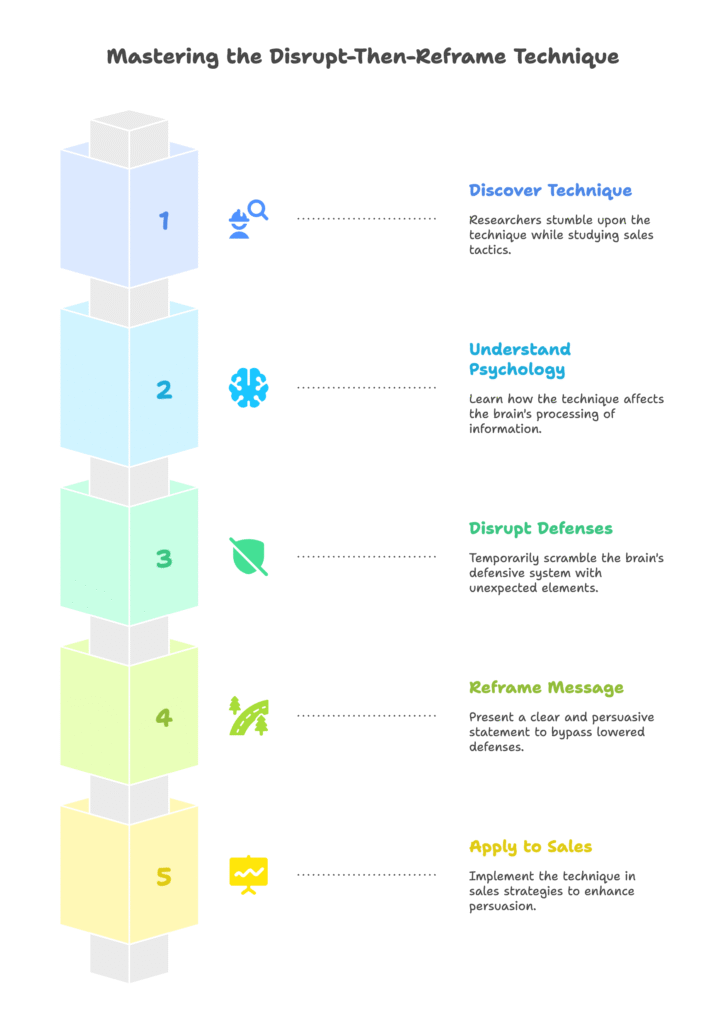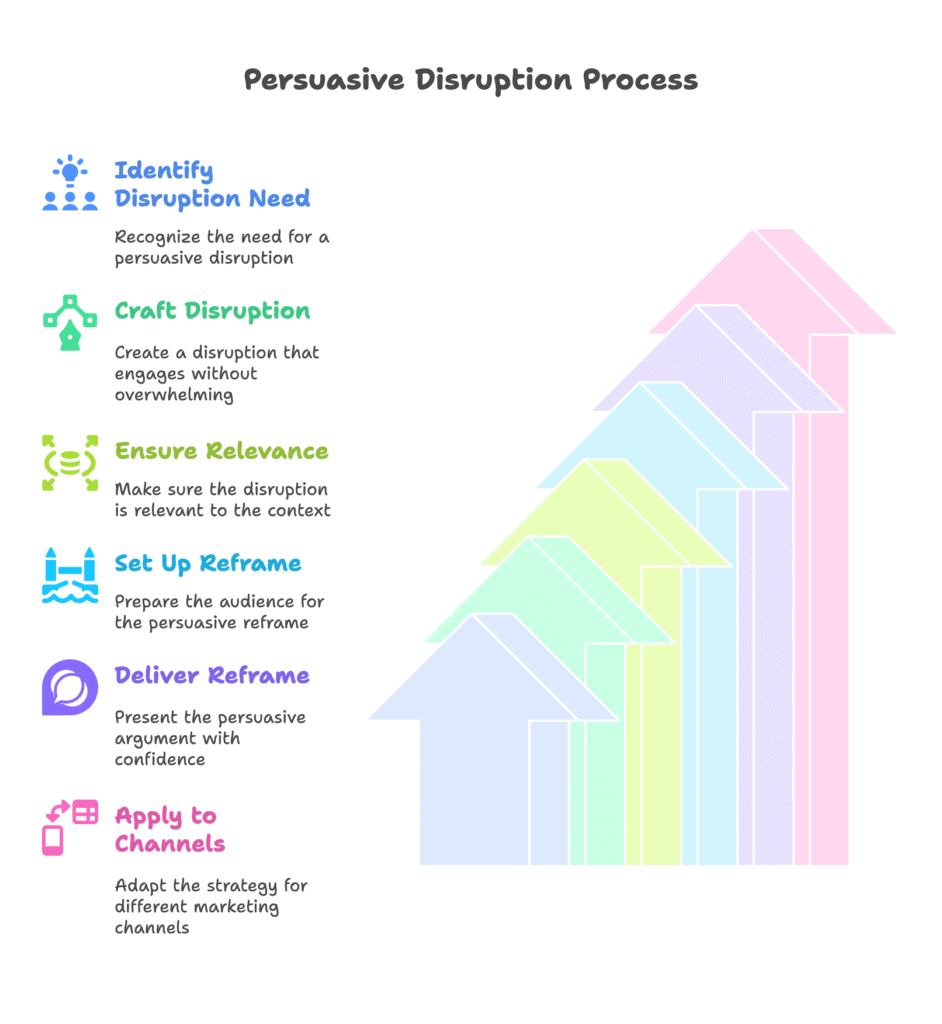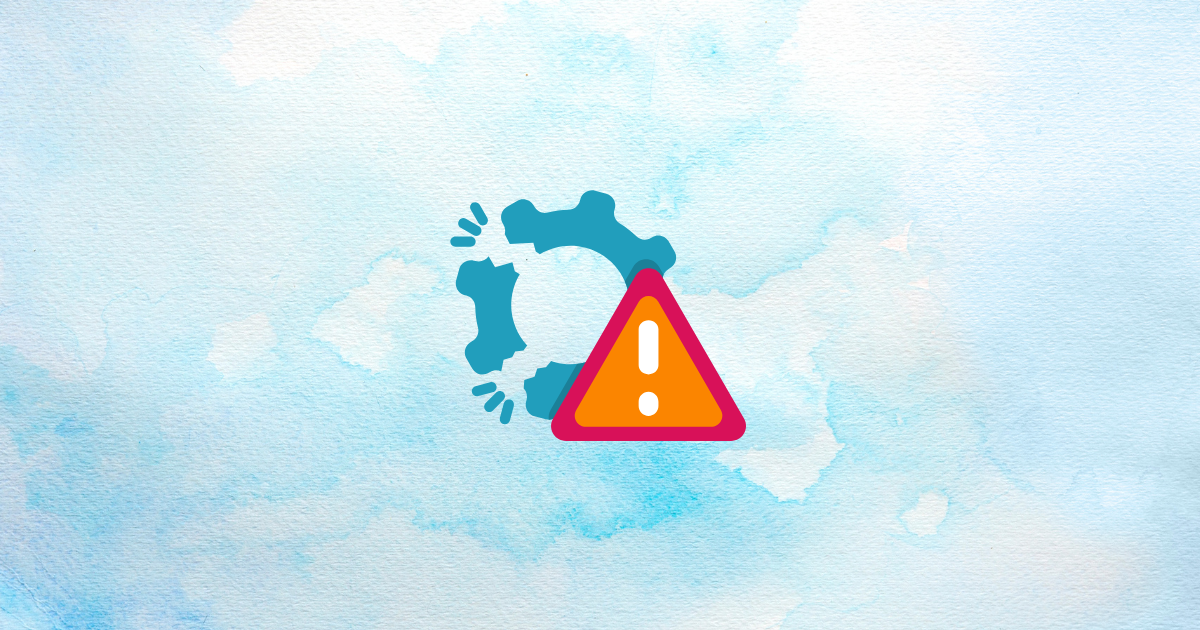What if I told you there’s a psychological technique that can literally double your conversion rates with just a few words? What if the secret wasn’t about adding more features, better images, or lower prices—but about confusing your customers’ brains for just a split second?
Sounds crazy, right? But here’s the thing: scientists have proven that a simple “mental hiccup” followed by clear guidance can increase sales by 40% to 80%. This isn’t some sketchy manipulation tactic—it’s a well-researched psychological phenomenon that smart marketers have been quietly using for decades.
Picture this: instead of saying “This product costs $5.50,” you say “This product costs 550 pennies… which is just $5.50 and a complete bargain!” That moment of mental math creates a tiny disruption that makes people more likely to buy. The research behind this is rock-solid, and the results are mind-blowing.
But here’s what most Shopify store owners don’t realize: this technique, called “Disrupt-Then-Reframe,” can be applied to every single piece of copy on your store. From product descriptions to checkout pages, from email subject lines to upsell offers.
By the time you finish reading this article, you’ll understand exactly how this psychological technique works, why it’s so effective, and most importantly—how to implement it across your entire Shopify store to dramatically boost your sales. You’ll also learn the ethical way to use this power, because with great conversion rates comes great responsibility.
Ready to discover the copywriting technique that feels like a cheat code for your brain? Let’s dive into the fascinating world of controlled confusion.
The Science Behind Controlled Confusion
Before we jump into practical applications, let’s understand exactly what’s happening in your customers’ brains when you use this technique. Trust me, the psychology behind this is both fascinating and incredibly practical.

The Disrupt-Then-Reframe technique was first discovered by researchers Barbara Davis and Eric Knowles in 1999. They were studying door-to-door sales and stumbled upon something remarkable. When salespeople said “8 cards for $3” versus “300 pennies for 8 cards… which is a bargain!”, the conversion rate literally doubled from 40% to 80%.
But why does this work? It all comes down to how our brains process information.
The Two-Step Mental Dance
Your customers’ brains are constantly on guard against sales messages. Every time someone tries to sell them something, their mental defenses automatically activate. They start thinking of objections, comparing prices, and looking for reasons to say no.
The disruption phase does something clever—it temporarily scrambles this defensive system. When customers encounter something slightly confusing or unexpected, their brain has to pause and process it. For that brief moment, their usual objection-generating machinery is busy doing mental math or trying to understand the unusual presentation.
Then comes the reframe—a clear, simple, and persuasive statement that slides right past their temporarily lowered defenses. It’s like sneaking past a guard who’s momentarily distracted.
The Cognitive Science Explanation
This technique works because of something called “dual-process reasoning.” Our brains have two modes: careful, analytical thinking and quick, instinctive responses. The disruption forces people into analytical mode (trying to figure out what you mean), while the reframe targets their instinctive response system.
Research shows that this combination reduces people’s ability to form counterarguments and makes them more susceptible to persuasive elements like social proof, urgency, and value propositions. It’s not manipulation—it’s simply presenting information in a way that works with natural brain processes rather than against them.
Understanding the science is crucial, but now comes the exciting part: how do you actually apply this to your Shopify store? Let’s explore the specific techniques that can transform your sales copy from ordinary to irresistible.
Transforming Your Shopify Store with Strategic Disruption
Now we get to the practical magic—specific ways to apply the Disrupt-Then-Reframe technique across every part of your Shopify store. These aren’t theoretical concepts; they’re battle-tested strategies you can implement today.
Pricing That Makes People Think (Then Buy)
Your pricing presentation is the perfect place to start experimenting with DTR. Instead of simply stating your price, create a moment of cognitive engagement.
Traditional approach: “This premium skincare set costs $89”
DTR approach: “This premium skincare set costs 8,900 pennies… which breaks down to just $89 for a complete transformation”
The penny conversion forces a brief mental calculation, followed by a reframe that emphasizes value. Other effective pricing disruptions include:
- Time-based calculations: “For less than 73 cents per day… that’s just $22 per month”
- Unusual unit measurements: “Weighs less than 12 sugar packets… that’s only 2.1 ounces”
- Comparative disruptions: “Costs less than your daily coffee for a month… just $29.99”
Product Descriptions That Break Mental Patterns
Your product descriptions offer countless opportunities for strategic disruption. The key is challenging conventional thinking about what your product is or does.
Instead of: “High-quality wireless headphones with noise cancellation”
Try: “These headphones contain more computing power than the Apollo 11 mission… all focused on delivering perfect sound quality”
The unexpected comparison creates disruption, while the reframe emphasizes the sophisticated technology benefit. This technique works particularly well for:
- Challenging product categories: “This isn’t just a backpack, it’s a mobile office”
- Unexpected benefit presentations: “Contains the antioxidant power of 47 blueberries… in every single serving”
- Counter-intuitive positioning: “The ‘weakness’ that makes this fabric incredibly strong”
Checkout Psychology That Reduces Abandonment
Cart abandonment is where DTR can really shine. The checkout process is exactly when customers’ analytical brains kick into high gear, looking for reasons to back out.
Traditional cart summary: “3 items – Total: $127.50”
DTR approach: “3 carefully selected items totaling 12,750 pennies… that’s just $127.50 for everything you need”
The disruption makes them process the number differently, while the reframe emphasizes completeness and value. Other checkout DTR applications include:
- Savings calculations: “You’re saving 2,199 pennies… that’s $21.99 off the regular price!”
- Time-sensitive urgency: “847 people viewed this in the last hour… 23 bought it in the last 10 minutes”
- Social proof disruption: “Join 4,847 smart shoppers… who’ve already discovered this secret”
These applications are powerful, but effectiveness depends on execution. Let’s dive into the specific copywriting techniques that make DTR work like magic.
Mastering the Art of Persuasive Disruption
Writing effective DTR copy is both science and art. The disruption needs to be just confusing enough to engage the brain without being so complex that people give up. Let me show you exactly how to craft copy that works.

The Perfect Disruption Formula
Effective disruptions share three key characteristics. First, they must require some mental processing—not immediate comprehension. If people understand instantly, there’s no disruption. If it’s too complex, they’ll abandon the effort entirely.
The sweet spot is about 2-4 seconds of mental engagement. Examples that hit this target:
- Simple arithmetic: “550 pennies” (requires conversion to dollars)
- Unusual comparisons: “Lighter than 73 paper clips” (requires mental visualization)
- Unexpected framing: “Contains tomorrow’s technology” (requires conceptual processing)
Second, the disruption should feel relevant, not random. “Costs 947 jellybeans” isn’t effective because jellybeans have no logical connection to pricing. But “Costs less than your morning coffee for a week” works because coffee is a familiar daily expense.
Third, the disruption must set up the reframe. Every disruption should create a natural bridge to your persuasive conclusion.
Reframe Strategies That Close the Deal
Your reframe is where the actual persuasion happens. While the disruption lowers mental defenses, the reframe needs to deliver a compelling reason to act.
Effective reframes typically include:
- Authoritative language: “which means,” “that’s,” “making this”
- Clear benefit statements: “a complete bargain,” “everything you need,” “perfect for”
- Urgency or scarcity: “limited time,” “while supplies last,” “exclusive offer”
- Social validation: “what smart shoppers choose,” “the preferred option,” “customer favorite”
The tone of your reframe should be confident and reassuring. After momentarily confusing customers, you want to guide them to a clear, comfortable conclusion.
Channel-Specific Applications
DTR works differently across various parts of your store. Headlines need quick disruptions with immediate reframes, while product descriptions can use more elaborate setups.
For email subject lines, try: “847 people can’t be wrong… (opening reveals the logic)”
For product page headlines: “This ‘impossible’ material… is now available in our new collection”
For call-to-action buttons: “Claim your 2,999-penny value… (just $29.99) now”
Each channel requires different timing and complexity levels, but the basic disruption-reframe structure remains constant.
Understanding technique is one thing, but successful implementation requires knowing how different industries and products respond to DTR. Let’s explore specific strategies for various types of Shopify stores.
Industry-Specific DTR Strategies That Convert
Not all products are created equal when it comes to DTR effectiveness. Different industries, price points, and customer types respond to different disruption styles. Here’s how to tailor your approach for maximum impact.
Fashion and Apparel: Styling Decisions Through Disruption
Fashion customers make emotional decisions but justify them logically. DTR helps bridge this gap by disrupting analytical thinking while reinforcing emotional desires.
Size guide disruption: “This runs smaller than 73% of brands… which means you’ll want to size up for the perfect fit”
Seasonal pricing: “Summer inventory valued at 4,799 pennies… now just $47.99 before fall arrives”
Fashion DTR works best when it addresses common concerns (sizing, seasonal relevance, style longevity) through unexpected framings.
Technology Products: Simplifying Complexity
Tech customers often suffer from analysis paralysis—too many specifications, features, and options. DTR can cut through technical confusion by reframing complex features as simple benefits.
Specification disruption: “Contains more processing cores than most laptops… meaning your smartphone tasks happen instantly”
Performance reframing: “Faster than 94% of competing models… which means no more waiting for anything”
The key with tech products is translating technical advantages into real-world benefits through strategic disruption.
Health and Wellness: Evidence-Based Disruption
Health-conscious customers want proof and transparency. DTR in this space works by presenting scientific information in unexpected ways, then reframing for practical application.
Ingredient disruption: “Contains the antioxidant equivalent of 47 blueberries… meaning maximum anti-aging power in every dose”
Dosage presentation: “One tablet equals 3,247 milligrams of pure nutrition… that’s everything your body needs in one convenient form”
Health and wellness DTR must maintain scientific accuracy while making complex nutritional information more digestible.
Service-Based Disruptions
Digital products and subscriptions present unique DTR opportunities. Since customers can’t physically touch these products, disruption helps make abstract value more concrete.
Subscription value: “365 days of unlimited access for less than 27 cents per day… that’s just $99 for an entire year of premium features”
Digital product framing: “Contains 4,847 hours of expert knowledge… compressed into 90 minutes of actionable content”
Service-based DTR focuses on time value, expertise compression, and access benefits rather than physical product features.
Implementing these industry-specific strategies is just the beginning. To truly master DTR, you need to measure what works and continuously optimize your approach.
Measuring Success and Optimizing Performance
You’ve learned the theory and seen the applications, but here’s where many merchants stumble: measuring DTR effectiveness and systematically improving results. Let’s explore exactly how to track what works and scale your successes.
Key Metrics That Matter
Traditional conversion rate is important, but DTR requires more nuanced measurement. You need to understand not just whether people buy, but how they respond to the disruption itself.
Primary DTR metrics include:
- Engagement time: Do people spend more time reading DTR copy versus traditional copy?
- Objection frequency: Are customer service inquiries about price or value decreasing?
- Cart abandonment timing: Are people abandoning at different stages with DTR copy?
- A/B testing significance: Are conversion improvements statistically meaningful?
The goal isn’t just higher conversion rates—it’s understanding which types of disruptions resonate with your specific audience.
Testing Methodologies That Reveal Truth
Effective DTR testing requires careful experimental design. You can’t just change everything at once and hope for the best. Here’s how to test systematically:
Single-variable testing: Test one DTR element at a time—disruption style, reframe approach, or placement location. This reveals what specifically drives improvement.
Audience segmentation: Different customer segments may respond differently to DTR. New visitors might need different disruptions than returning customers.
Timing analysis: Track when during the customer journey DTR is most effective. Product page DTR might work differently than checkout page DTR.
Qualitative Insights Through Customer Feedback
Numbers tell part of the story, but customer interviews reveal the complete picture. Ask customers directly about their experience with your copy.
Questions that uncover DTR effectiveness:
- “What made you decide to purchase at that moment?”
- “Which parts of the product description were most convincing?”
- “Did anything about the pricing presentation surprise you?”
These conversations often reveal which disruptions feel clever and helpful versus which feel manipulative or confusing.
But measurement is meaningless without ethical implementation. Let’s examine how to use DTR responsibly and build long-term customer relationships.
The Ethics of Psychological Persuasion
With great psychological power comes great responsibility. DTR is incredibly effective, which means it can be misused to manipulate customers into decisions they’ll regret. Let’s establish clear ethical guidelines for responsible implementation.
The Line Between Influence and Manipulation
Ethical DTR enhances communication without deceiving customers. The disruption should clarify value, not obscure important information.
Ethical DTR practices:
- Truthful information: All claims in both disruption and reframe must be factually accurate
- Clear value communication: The reframe should genuinely help customers understand benefits
- Transparent pricing: Disruptions should clarify rather than hide true costs
- Genuine problem-solving: Focus on helping customers make good decisions for their needs
The test is simple: would you feel comfortable explaining your DTR strategy to customers face-to-face?
Building Long-Term Relationships
Short-term conversion gains mean nothing if customers feel tricked or disappointed. Ethical DTR should improve the entire customer experience, not just the initial sale.
Focus on customer benefit over pure persuasion. Use DTR to help people understand value, overcome decision paralysis, and feel confident about their choices.
Consider long-term relationship impact. Will customers who bought through DTR copy become repeat buyers and advocates? If not, your implementation needs adjustment.
Legal and Compliance Considerations
DTR must comply with advertising standards and platform policies. Creative presentation doesn’t exempt you from truth-in-advertising requirements.
Key compliance areas include:
- Pricing clarity: Unusual price presentations must still clearly communicate actual costs
- Claim substantiation: Any benefits mentioned in reframes must be supportable
- Platform compliance: Shopify and payment processor guidelines still apply
- International regulations: Different countries have varying advertising standards
When in doubt, err on the side of transparency and customer benefit.
Understanding ethics is crucial, but you’re probably wondering about advanced applications and future possibilities. Let’s explore cutting-edge DTR techniques and emerging opportunities.
Advanced DTR Techniques and Future Applications
Basic text-based DTR is just the beginning. Advanced practitioners are integrating visual elements, multimedia content, and even AI-powered personalization to create more sophisticated disruption-reframe experiences.
Multi-Modal DTR Implementation
Visual disruption can be incredibly powerful when combined with copy-based reframes. Think about product images that challenge expectations, followed by clear explanatory text.
Visual DTR examples:
- Scale disruption: Show your product next to unexpected size references, then reframe the practical implications
- Context disruption: Display products in unusual environments, then explain the versatility benefit
- Process disruption: Show complex manufacturing in simple visuals, then reframe the quality advantage
Video content offers even more DTR possibilities. You can create temporal disruptions—unexpected pauses, speed changes, or perspective shifts—followed by clear benefit explanations.
AI-Powered Personalization
The future of DTR lies in personalization. Different customers respond to different types of disruptions based on their psychology, purchase history, and browsing behavior.
Imagine DTR copy that adapts in real-time:
- Analytical customers: Receive number-based disruptions with logic-focused reframes
- Emotional customers: Get story-based disruptions with feeling-focused reframes
- Bargain hunters: See price-comparison disruptions with value-emphasis reframes
Machine learning could analyze customer behavior patterns and automatically select the most effective DTR approach for each individual.
Interactive DTR Experiences
Advanced DTR might involve customer participation in the disruption. Interactive elements that require mental engagement could create stronger psychological effects.
Examples include calculators that require input before revealing value, quizzes that lead to personalized product recommendations, or configurators that challenge assumptions about what customers actually need.
Voice commerce presents another frontier. Audio-based DTR could use timing, emphasis, and conversational disruptions to guide purchase decisions in smart speaker environments.
These advanced techniques are exciting, but success starts with solid fundamentals. Let’s create a practical roadmap for implementing DTR in your Shopify store.
Your DTR Implementation Roadmap
Theory is fascinating, but you need a practical plan to transform your Shopify store. Here’s a step-by-step roadmap that takes you from DTR beginner to conversion optimization expert.
Phase 1: Foundation Building (Weeks 1-4)
Start by auditing your current copy and establishing baseline metrics. You need to know where you’re starting before you can measure improvement.
Week 1-2 activities:
- Conversion rate audit: Document current performance across key pages
- Copy inventory: Catalog existing product descriptions, headlines, and call-to-actions
- Customer feedback review: Analyze existing reviews and support conversations for objection patterns
Week 3-4 activities:
- DTR opportunity identification: Select 3-5 high-traffic pages for initial testing
- Disruption-reframe brainstorming: Create multiple DTR variations for each target area
- Testing timeline creation: Plan systematic A/B testing schedule
Phase 2: Testing and Learning (Weeks 5-12)
Begin systematic DTR implementation with careful measurement. Start small, test thoroughly, and learn from every experiment.
Testing priorities:
- Single product focus: Test DTR on your best-selling product first
- One element at a time: Change only headline, or only pricing, or only description
- Statistical significance: Run tests long enough for meaningful results
- Customer response monitoring: Track both quantitative metrics and qualitative feedback
Optimization cycles: Every 2-3 weeks, analyze results and iterate. Successful techniques get expanded; unsuccessful approaches get eliminated or modified.
Phase 3: Scaling Success (Weeks 13+)
Deploy proven DTR techniques across your entire store while maintaining optimization momentum. This is where systematic implementation creates compound results.
Store-wide deployment:
- Template creation: Develop DTR frameworks for different product types
- Team training: Educate content creators on effective DTR principles
- Ongoing optimization: Establish regular testing schedules for continuous improvement
- Performance monitoring: Track long-term customer satisfaction and retention alongside conversion improvements
Advanced applications: Experiment with visual DTR, email sequences, and seasonal campaigns using proven disruption-reframe principles.
The Power of Strategic Confusion
We’ve journeyed deep into the fascinating world of cognitive disruption and persuasive reframing. From the original research showing 40-80% conversion increases to specific implementation strategies for your Shopify store, you now understand one of marketing’s most powerful psychological techniques.
The beauty of DTR lies in its simplicity and universality. Whether you’re selling fashion, technology, or digital services, the basic principle remains the same: momentarily engage the analytical mind while delivering persuasive guidance.
Remember the key principles we’ve covered:
- Disruption must be relevant and engaging—confusing enough to require mental processing but not so complex that people give up
- Reframes should provide clear, benefit-focused guidance—helping customers understand value and feel confident about their decision
- Ethical implementation focuses on customer benefit—using DTR to clarify value rather than manipulate decisions
- Systematic testing reveals what works—measuring both conversion improvements and customer satisfaction
The research is clear: DTR isn’t just a clever copywriting trick—it’s a scientifically validated approach to communication that works with natural brain processes rather than against them. When implemented ethically and systematically, it can transform your store’s performance while actually improving the customer experience.
The question isn’t whether DTR will work for your Shopify store—it’s how quickly you’ll start testing and optimizing your approach.
Start small, test carefully, and remember that the goal is always genuine value communication. When you help customers understand and appreciate what you’re offering, everyone wins.
Speaking of helping customers understand value, if you’re looking to optimize your Shopify store’s conversion rates through intelligent, behavior-based offers, consider exploring Growth Suite—an app that uses sophisticated timing and personalization to present the right offers to the right customers at exactly the right moment. Because while DTR helps with communication, combining it with smart offer timing can create truly exceptional conversion results.




